Precast concrete structural systems consist of elements that are fabricated in controlled conditions in enclosed factories. This means that tolerances can be accurately controlled, waste can be minimised, and that a denser, stronger and better quality concrete can be produced. Concrete is cast into forms and left to cure. Precast forms are normally made of steel or plywood. Precast elements generally incorporate steel reinforcement to resist loading stresses. A common cause of the deterioration of concrete structures is the corrosion of this reinforcement. It is important, therefore, that they are properly designed and embedded in the concrete.
Precast building systems refer to the components which are assembled to enable a specific function. Precast concrete components can be connected in many ways. In order to do this, connections are embedded in the concrete at the time of casting. This must be done with great precision. They can be grouted or concreted together. The different systems of precast concrete buildings can be grouped as, overall precast systems, systems for lateral load resistance and floor and roof systems.
Different types of precast building systems
Overall precast system
The overall precast system is required to resist lateral loads caused due to components of a building and also external pressure. It can be broadly classified into four groups namely, skeletal frame system, large panel system, cell system and block system.
Skeletal Frame System
The frames can be designed as moment-frames and often are either combined with precast shear wall systems or cast-in-situ shear walls. The speed of construction and the high quality of the components are the main benefits of using precast skeletal systems. In this frame state, precast concrete beams, rafters and trusses spanning the bays are supported on columns that can be single or multi-storey in height. The frame system can be designed for resisting lateral loads. However, there may be a need for supplemental lateral load resistance through the use of braces or walls. Skeletal frame system consists of three types, low-rise portals used in industrial and commercial buildings frames, multi-storeyed frames used in institutional and commercial buildings and slab-column system which can be cast on the ground in the footprint area of the building and then hoisted up for final elevation.
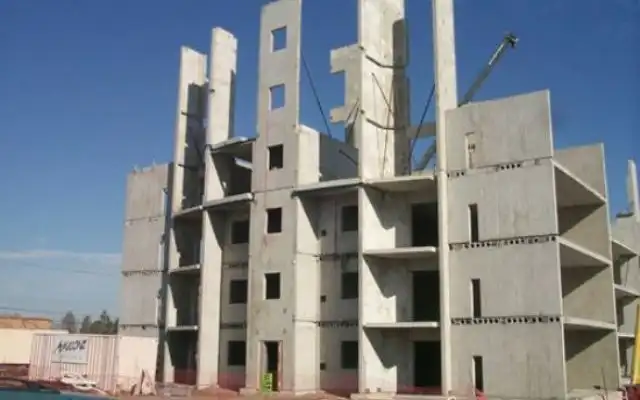
Large Panel System
Large panel structures for exterior walls consist of panels one or two stories in height and width. The panels may be blind (without openings) or with window or door openings. The panels are load-bearing and it transfers gravity loads of the panels above the supported slabs. In terms of design, the wall panels may be single-layer (solid) and multilayer (sandwich). The panels are manufactured from materials that have insulating properties and at the same time can perform supporting functions.
The panels are produced in finished form, with ready-to-paint surfaces and with windows and doors; the piping for heating and other systems and for wiring may also be installed in the panels. The surface of exterior wall panels is covered with decorative mortar or is faced with ceramic or other finishing tiles. After assembly, the joints between panels are filled with mortar or with lightweight or ordinary concrete and then sealed with elastic packing and special mastics. It is suitable for buildings that require close partitioning of space. With proper joints, the system has adequate strength and stiffness for resisting lateral loads.
Cell / box System
The development of the box system makes it possible to manufacture an entire completed product in the factory. “box-module structures” are buildings with a fireproof and permanent design in concrete construction. Here the entire structure is factory-built, then split into modules, and transported to the construction site. In this system, the orthogonal walls and slabs are cast together as integral units to create box-type structure. The box system offers advantages such as cost reduction, quick mounting, timely completion of works, and minimization of material losses, thus serving to create higher-quality physical spaces. The system is suitable for enclosed spaces.
Block System
The blocks with a rectangular or quadrangular prism shape contain a normal weight hydraulic concrete casing, lightweight concrete or similar material, for building walls or slabs. They can be reinforced by placing bears in hollow spaces and thereafter grouting the spaces. For walls, the blocks are tongued and grooved on the top and bottom sides and placed horizontally one on top of the other using block or similar adhesive therebetween. In the corners or „T“ intersections, blocks are alternatively placed and form armed headframes for stability and resistance. These are suitable buildings with lesser height.
Lateral load resistance system
A lateral force-resisting system is supposed to be both performance-based and cost-effective. Every lateral resisting system has its unique benefits and difficulties for each design and environmental situation. The design of precast, prestressed concrete structures depends on the integration of the structural system as a whole, the connections, and the individual components. Each aspect must consider the others as well as the functional requirements imposed by the building use. There are a variety of precast concrete designs that can be used to achieve these goals economically and effectively. Hence for seismic resistance for high rise structures, it is important to provide an exclusive Lateral Load Resisting System (LLRS) which will supplement the behavior of moment-resisting frames in resisting the lateral load. The dual structural system consisting of a special moment-resisting frame (SMRF) and concrete shear wall has better seismic performance due to improved lateral stiffness and lateral strength. A well-designed system of shear walls in a building frame improves its seismic performance significantly.
There are different types of systems that provide resistance to the lateral loads, they are discussed below.
Portal frames
Portal frames are generally low-rise structures, comprising columns and horizontal or pitched rafters, connected by moment-resisting connections. Resistance to lateral and vertical actions is provided by the rigidity of the connections and the bending stiffness of the members, which is increased by a suitable haunch or deepening of the rafter sections. This form of continuous frame structure is stable in its plane and provides a clear span that is unobstructed by bracing.
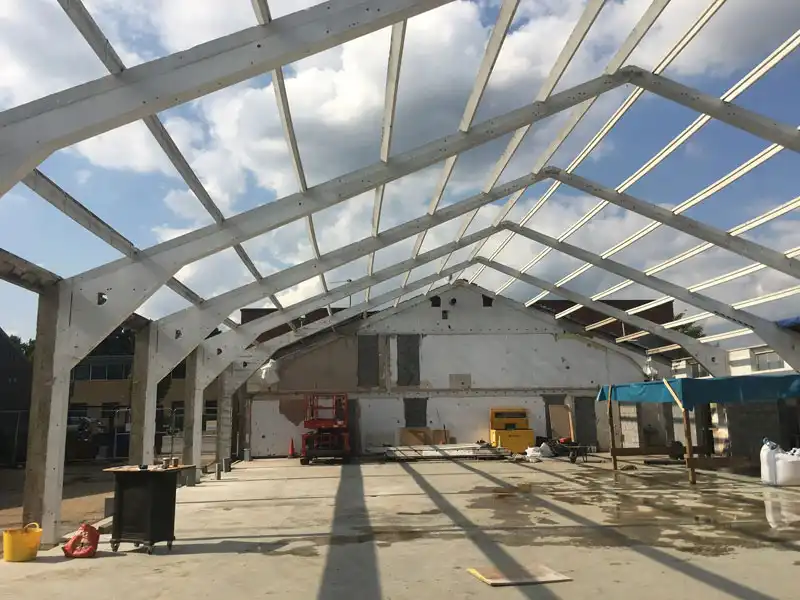
Multi-storey frame structure
The resistance to load in a multi-storey frame structure is generated from the frame action of the beams and columns and rigidity of the beam-to-column joints.The lateral load depends on the connections of the members,Multi-storied frames are divided into three categories, frames beam- to- column connection, frames with dry-jointed beam-to-column connection and dual system
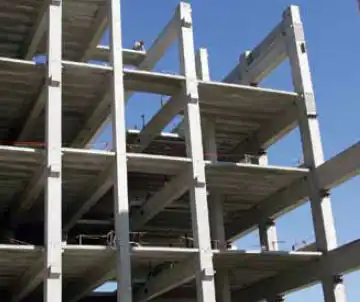
Wall system
Precast walls are energy efficient due to a high thermal mass that enables materials to absorb and store temperatures at a more constant rate. This system, it reduces the fluctuation of temperatures within the building. Since precast wall panels are manufactured in a production facility, the impact that these panels impose on site is minimal. This helps reduce the space needed on a job site. Precast wall panels can be customized to the architect’s or owner’s desire. There are two kinds of wall systems. In the first type, load-bearing is provided in orthogonal directions and in second type load-bearing is provided in the longitudinal direction.
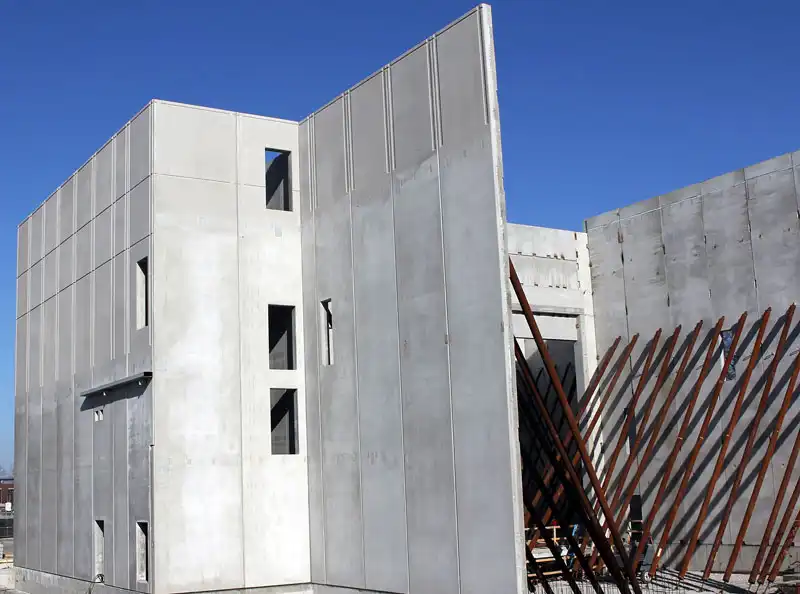
Roof and Floor system
These are produced off-site at the production facility. The floor and roof system can be easily installed with concrete structures. Designed to provide precise adjustments and fine-tuning, Floor and Roof System panels can form the roof of a single and multi-storey building. When used in multi-story buildings, the panels form the elevated slab of an upper level and simultaneously provide the ceiling attachment points for the level below. The joists incorporated in the Floor and Roof System provide ample space for the easy installation of ventilation ducts, electrical lines and plumbing lines. A variety of joist depths can be selected to facilitate the placement of trade requirements and ceiling attachments such as step-downs and coffers. Openings in any slab can be precast at the production facility.
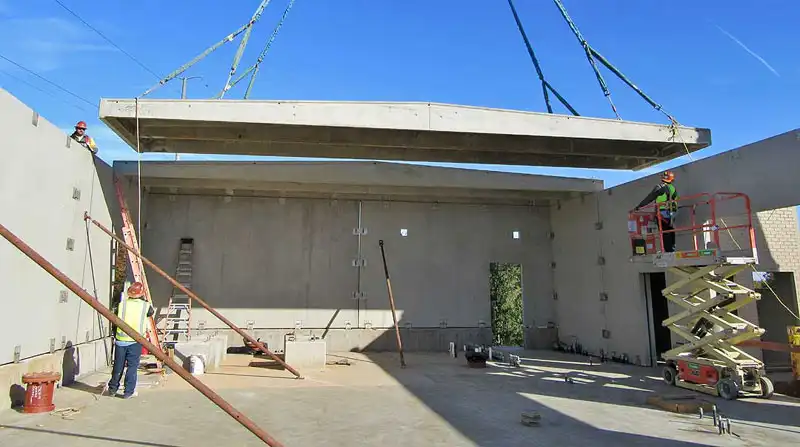
Concrete roof systems have three basic advantages over competitive materials- esthetic appeal, structural economy and functional utility. They are very economical, readily available, easily shipped and erected and contribute to early building occupancy. They are available as custom precast concrete products or are sold under several trade names. Since their production is highly industrialized, their cost is low. These are made of arches & shells and suitable for industrial and commercial building.
There is a great need for a durable precast concrete floor structure that is lighter, stronger and more energy-efficient, and one that can be manufactured in variable sizes. For added strength, prestressing strands are cast into the panels during production. Floor system components consist of floor units, spandrel units and interior beams.

